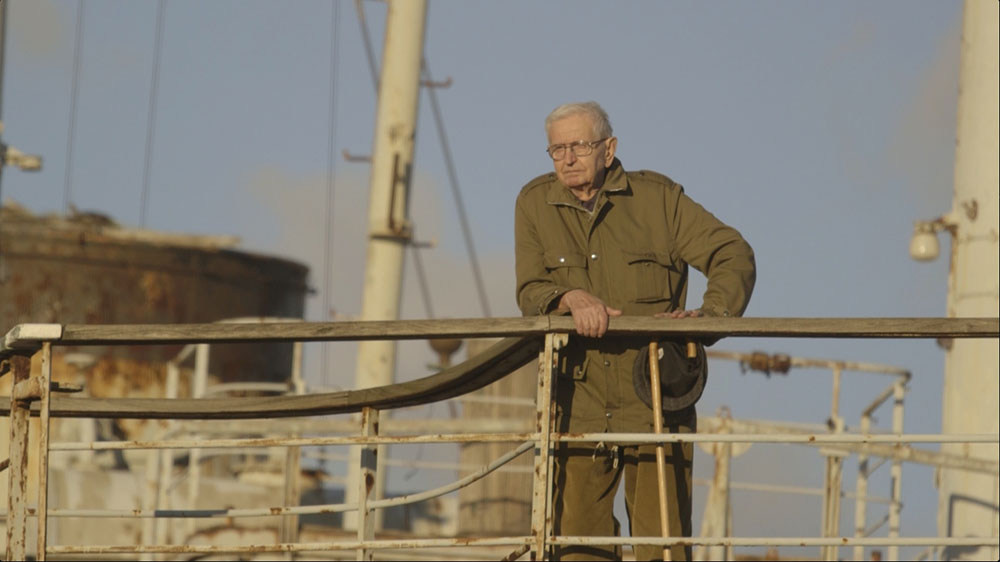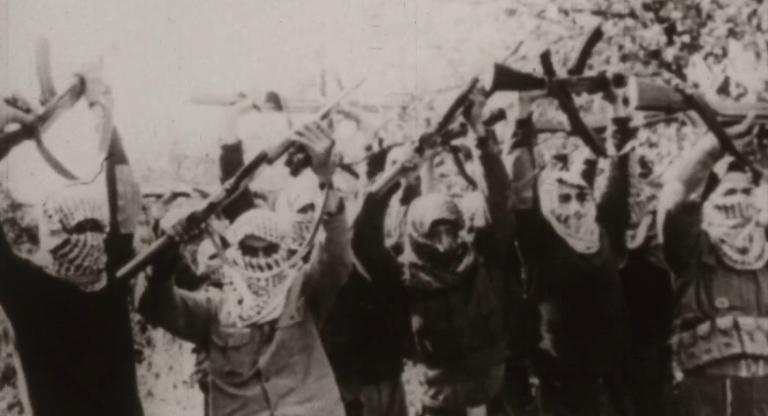Non-Aligned: Scenes from the Labudović Reels (2022) and Cine-Guerrilas: Scenes from the Labudović Reels (2022) by the Serbian director Mila Turajlić will screen at Anthology Film Archives as a diptych this week. Both films bring together traditional documentary aesthetics, archival material, and its director’s flawed perspective on history—her commentary often overrides the story of her central subject. These films represent a collision between the filmmaker and archival material that creates wrinkles and ambiguities that would otherwise remain imperceptible to the audience.
Throughout the two films, Turajlić follows the elderly Stevan Labudović, a newsreel cameraman who worked during the Yugoslav era. Her visits to Filmske Novosti’s archives—the organization in charge of newsreel production at the time—reveal Labudović’s work during the ‘50s and ‘60s. The archival films she finds show Labudović’s time aboard Tito’s personal yacht, the creation of the Non-Aligned Movement, and his time as a cameraman for the Algerian Liberation Army during the country’s war for independence. These films make it clear that this seemingly humble white-collar professional from the small town of Berane, Montenegro, had a front-row seat to major historical events throughout the late 20th century.
Non-Aligned opens with images of the first Non-Aligned summit in Belgrade in 1961, which saw countries that were not under the sway of either the US or the USSR during the Cold War announce themselves as a major power bloc in world politics. This half of the diptych also provides a more general overview of Labudović’s life. Turajlić’s narration questions her film’s intent: “Why dig out images which hardly anyone remembers?” she asks. For her, the Non-Aligned Movement is a dead idea. Yet Non-Alignment still retains a presence at the United Nations, even if it is not as powerful as it was in its heyday. Non-Aligned member states still represent over half of the world’s population and have been continually pushing for reform to the UN’s security council, as well as declaring Israel’s attacks on Palestinians to be illegal. The movement’s origins represent a major feat of creative imagination and foreign policy, two fields which rarely intersect.
There is a tinge of Yugo-nostalgia palpable in Turajlić’s voiceover throughout Non-Aligned, echoing the commentary from her entertaining documentary about the country’s big-budget Partisan war films: Cinema Komunisto (2011). But hers is a defeatist Yugo-nostalgia trapped in amber that considers Yugoslavism and Non-Alignment to be outdated philosophies. Since ethnonationalism is now the new norm in Serbian and post-Yugoslav politics, with such rhetoric polling quite well in every other election and the possibility of a new Cold War on the horizon, the principles of Non-Alignment are arguably more relevant than ever.
The archival material from the Non-Aligned Summit in 1961—much of it unseen since—is revelatory. Labudović’s images were shot without sound and were intended for journalists to complement with their own narrations; their commentary shaped, (mis)interpreted, and fragmented the original speakers’ words (in the film, we see how French and US news crews took the Yugoslav footage and added derisory narration of their own—a voiceover version of the Kuleshov effect). When she is able to track down sound recordings from Radio Belgrade’s archives, Turajlić syncs them with the footage. And when they are successfully paired, the film manages to provide footage of some of the most influential political figures of the 20th century staking their claim to the world stage and outlining a fiercely independent, post-colonial vision of geopolitics.
Cine-Guerrilas is the simpler of the two films and it is more coherent. The film combines Labudović’s Algerian footage with footage from Turajlić’s own road trip through the country, in which she tried to track down people who worked with the cameraman. The narrow focus prevents Turajlić from meddling with the narrative; instead, she focuses on what the presence of Labudović’s camera meant for Algerian self-determination during the war of independence. Although shot by an outsider, the footage showcases a sense of international solidarity. The Laval Decree, enacted by the French colonial powers, barred African subjects from filming themselves, so Labudović’s presence as a representative of the Non-Aligned Movement ensured his Algerian comrades considered him as an equal. (The Algerian War Museum still holds a display on his time there that features his uniform and camera.) Some staged footage makes the propagandistic aspects of Labudović’s journey more clear, but his footage always addressed a fundamental cinematic question: how should a community create their self-image?
The interviews with Labudović in these two films, which were filmed before his death in 2017, present him as a conscientious professional who criticizes Turajlić’s camera placement and exhibits a sharp memory of the events depicted in each documentary. His footage represents the real and tangible effects of history—it is as priceless today as it was then.
Scenes from the Labudović Reels screens March 25-27 at Anthology Film Archives.


